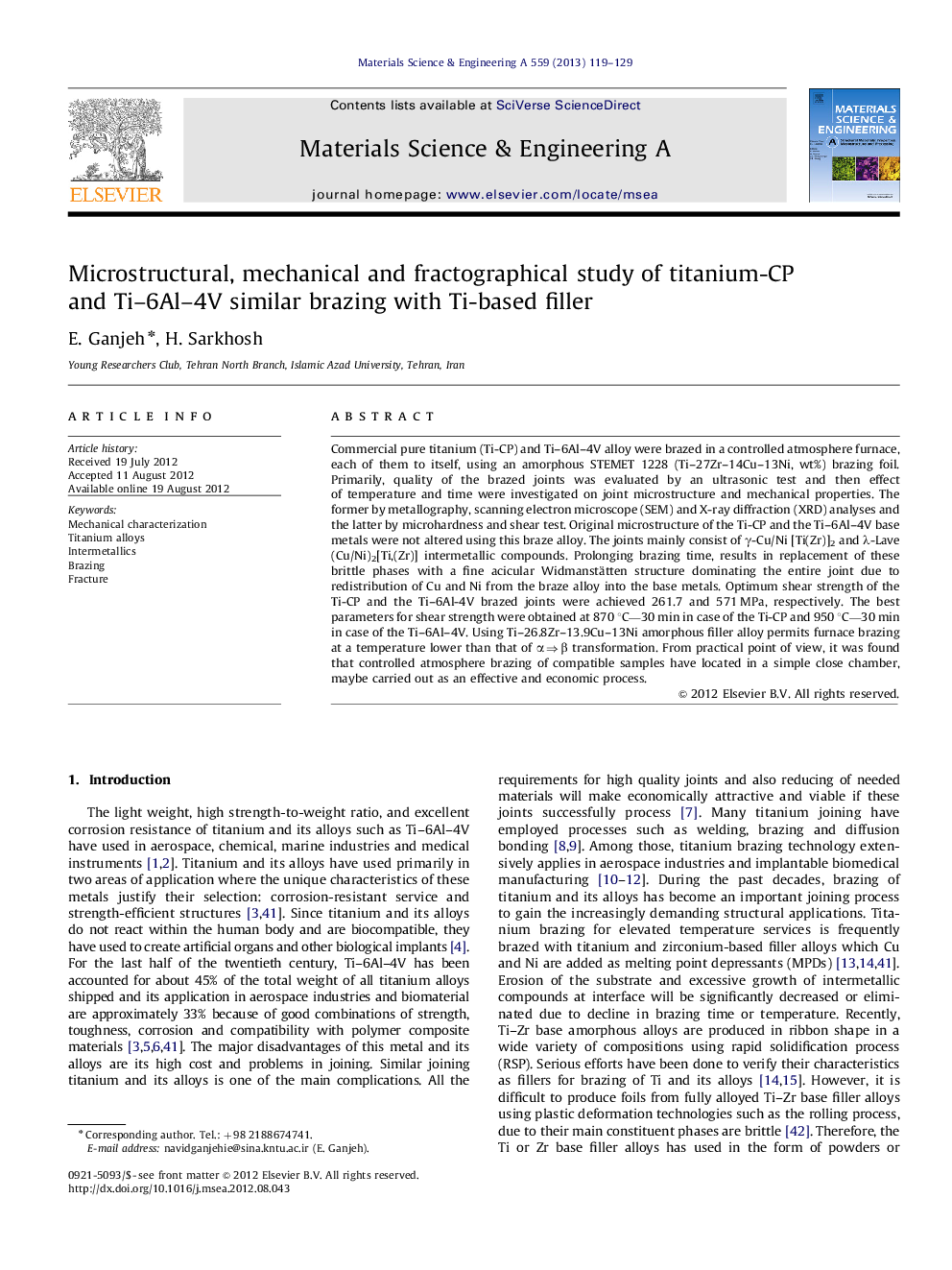| Article ID | Journal | Published Year | Pages | File Type |
|---|---|---|---|---|
| 1576639 | Materials Science and Engineering: A | 2013 | 11 Pages |
Commercial pure titanium (Ti-CP) and Ti–6Al–4V alloy were brazed in a controlled atmosphere furnace, each of them to itself, using an amorphous STEMET 1228 (Ti–27Zr–14Cu–13Ni, wt%) brazing foil. Primarily, quality of the brazed joints was evaluated by an ultrasonic test and then effect of temperature and time were investigated on joint microstructure and mechanical properties. The former by metallography, scanning electron microscope (SEM) and X-ray diffraction (XRD) analyses and the latter by microhardness and shear test. Original microstructure of the Ti-CP and the Ti–6Al–4V base metals were not altered using this braze alloy. The joints mainly consist of γ-Cu/Ni [Ti(Zr)]2 and λ-Lave (Cu/Ni)2[Ti,(Zr)] intermetallic compounds. Prolonging brazing time, results in replacement of these brittle phases with a fine acicular Widmanstätten structure dominating the entire joint due to redistribution of Cu and Ni from the braze alloy into the base metals. Optimum shear strength of the Ti-CP and the Ti–6Al-4V brazed joints were achieved 261.7 and 571 MPa, respectively. The best parameters for shear strength were obtained at 870 °C—30 min in case of the Ti-CP and 950 °C—30 min in case of the Ti–6Al–4V. Using Ti–26.8Zr–13.9Cu–13Ni amorphous filler alloy permits furnace brazing at a temperature lower than that of α⇒β transformation. From practical point of view, it was found that controlled atmosphere brazing of compatible samples have located in a simple close chamber, maybe carried out as an effective and economic process.
